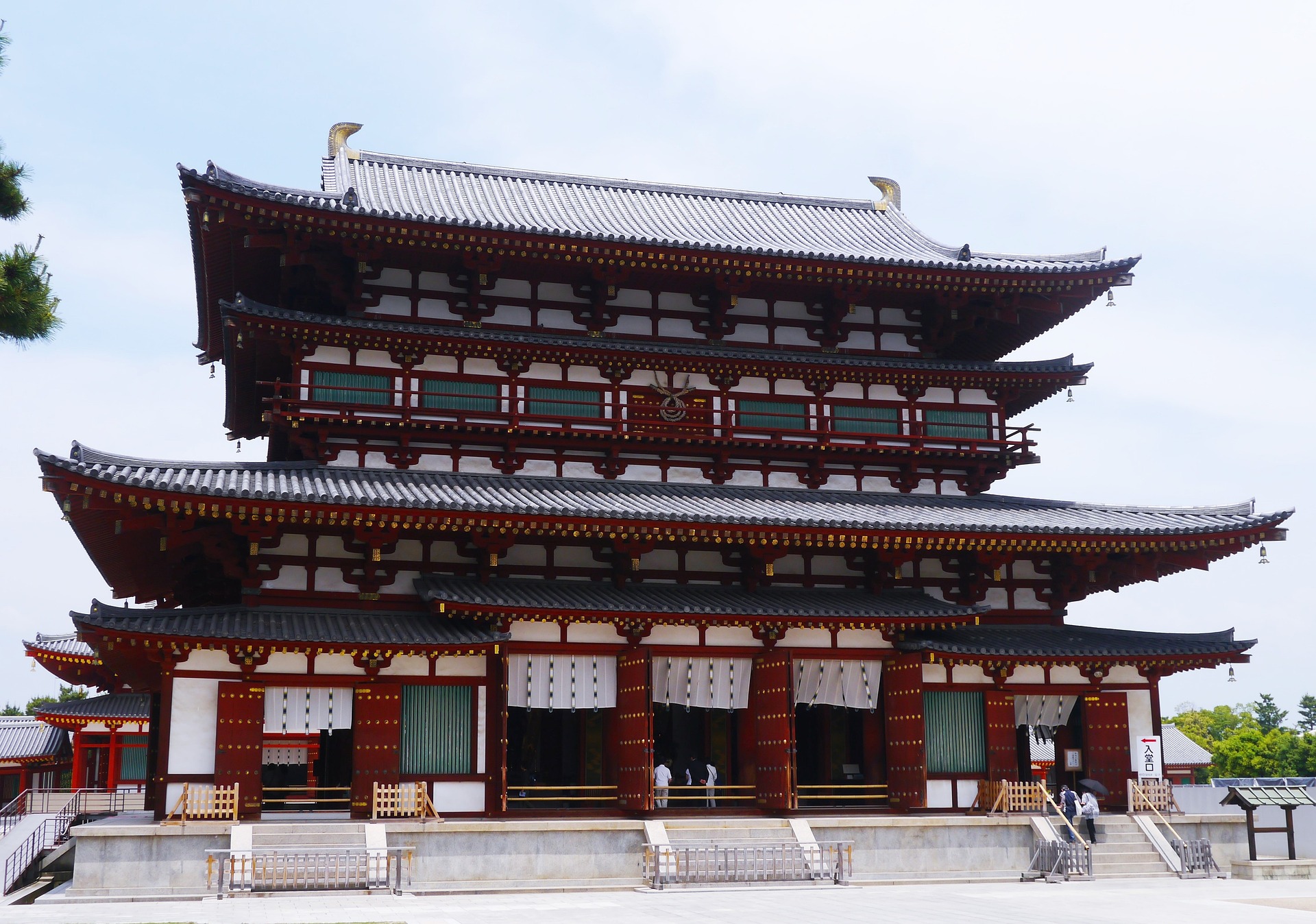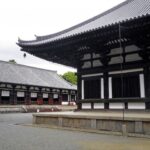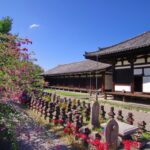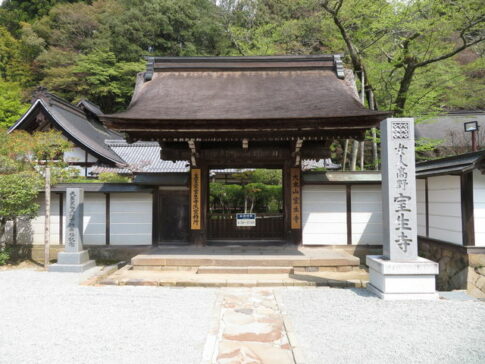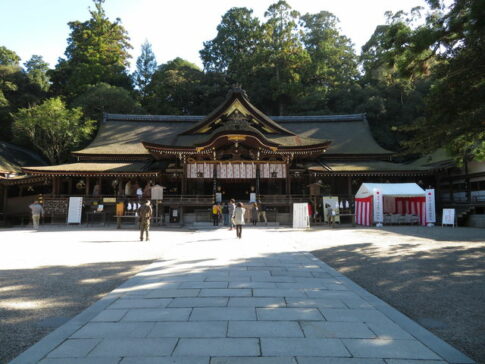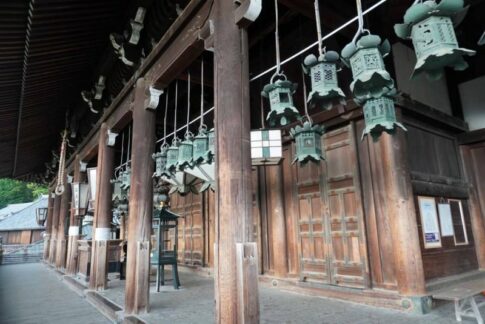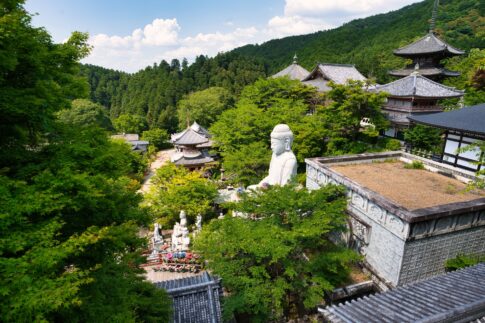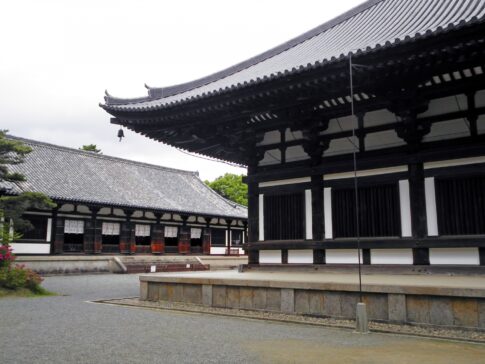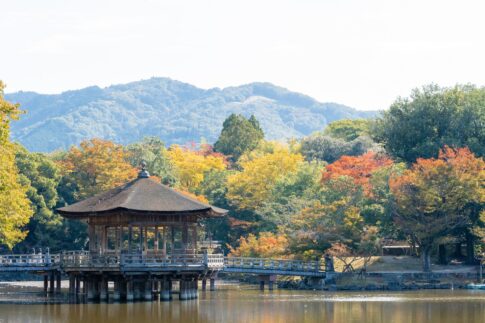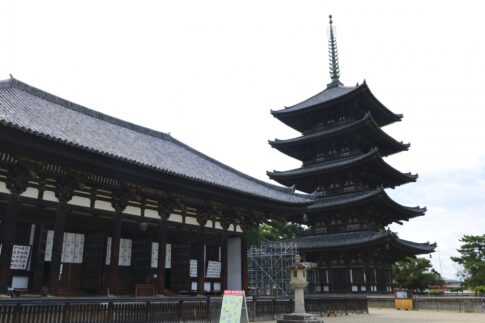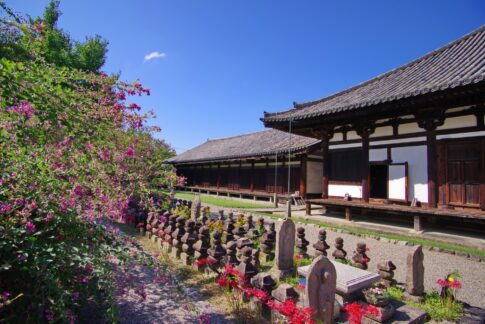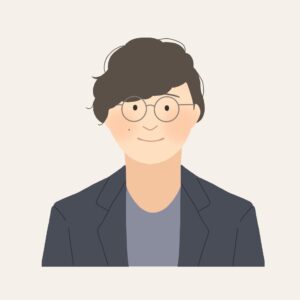Today we introduce Yakushiji Temple that contains the national treasure.
There are wide variety of attraction like towers, halls, paintings and so on.
It must be worth visiting.
What you need to know before visiting Yakushiji Temple
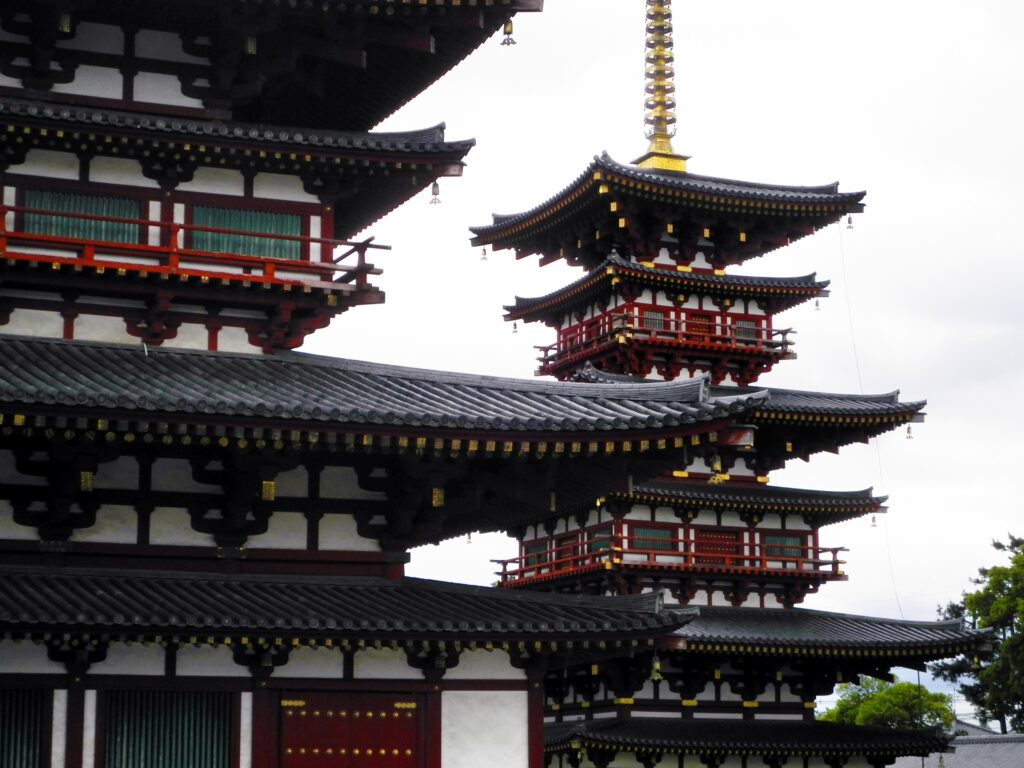
① Basic Information
Yakushiji Temple was built in the 9th year of Emperor Temmu (680) by Emperor Temmu to pray for the healing of the illness of Empress Uno Sanryo Uno no Sararanahime-miko (later Emperor Jito).
Emperor Temmu, however, died before Yakushiji Temple was completed, and Emperor Jito came to the throne and built Yakushiji Temple in the new capital, Fujiwara-kyo.
In 697, the main statue of Yakushi Nyorai was opened to the public, and the following year, the construction was completed and monks were assigned to live in the temple, as recorded in “Shoku-nihongi”.
In 710, the capital was moved from Fujiwara-kyo to Heijo-kyo by order of Emperor Gemyo.
With the transfer of the capital, Yakushiji Temple was also moved to its present location at Rokujo Nibo, Ukyo, Heijo-kyo.
At that time, Yakushiji Temple was considered one of the four major temples in Japan until the Tenpyo period (794-1185), and its main halls, including Kondo, both the East and West Pagodas, and the Main Lecture Hall, were decorated with a story floor, and its magnificent appearance was called ”Ryugu-zukuri”.
However, many of the halls and towers were lost to fire and earthquakes throughout the temple’s history.
In particular, the military fire in 1528 was so intense that the Kondo, the West Pagoda, the Main Lecture Hall, and other buildings were destroyed by fire.
Among them, the East Pagoda (National Treasure) is the only one that has survived from the time of its construction.
② Reconstruction of The Temple Complex
For Yakushiji Temple, the restoration of the lost temple buildings has been a long-held dream.
In 1968, Yoshitane Takada, the temple’s chief abbot, called for the restoration of the temple with spirituality in this era of rapid economic growth, where prosperity is based on material goods and destruction is based on the mind, and began to restore the Hakuho temple complex by offering sutra scrolls.
He started to promote the reconstruction of Hakuho Temple by offering 1 million scrolls of sutras for a fee of 1,000 yen per scroll (at that time). In 1976, the goal of one million sutra scrolls was achieved, and the Kondo hall was completed.
The year 2008 marks the 50th anniversary of the Hakuho temple complex restoration through the Buddhist sutra recitation. The main halls and towers of Hakuho Garan, including the West Pagoda, the Central Gate, the Cloister, the Main Lecture Hall, and the Shokudo Jikido, have been largely restored, and the great temple of ancient times has been revived.
The restoration of Yakushiji Temple’s complex was truly a crystallization of the beautiful spirit of the Japanese people. The next goal of Yakushiji Temple is to transmit the prayers of the Hakuho period and the faith of the Showa, Heisei, and 2025 periods.
Yakushiji Temple is a place of faith that has been handed down for 1,300 years, and a place where visitors can feel the ancient Nara of ancient times.
Yakushiji Temple was the first temple in Japan to have a central hall with the principal image enshrined and two towers on the east and west sides.
This type of temple layout is called “Yakushiji-style temple layout.
The magnificent appearance of the pagodas, each with a story above and below, is called “Ryugu-zukuri,” and is a characteristic of Yakushiji Temple’s temple complex.
Nine national treasures and 26 important cultural properties are enshrined in Yakushiji Temple, which continues to be deeply revered.
③ The Highlights of Yakushiji Temple
- Kondo (Golden Hall)
According to the Yakushi-ji Temple Engi, the Kondo was built in conjunction with the relocation of the capital to Heijo-kyo, and was decorated in a glittering splendor:
“Agate is used as a wicker stone and lapis lazuli is used as the ground.
Gold is used as ropes to cover the road.
According to “Konjaku Monogatari-shu,” even monks were not allowed to enter the Kondo hall of Yakushiji Temple, and it was a very special hall.
The Kondo was damaged by a great wind in the Muromachi period (1336-1573) and was repaired repeatedly, but was destroyed by fire in the Kyoroku period (1528).
Later, a temporary kondo was built by Nagamori Masuda, lord of Koriyama Castle, but the original two-story kondo could not be restored.
In 1968, the temporary kondo was dismantled and the present kondo was reconstructed in 1976.
In the upper level, there is a storehouse where sutra manuscripts are stored.
- Eastern Tower
In its 1,300-year history, Yakushiji Temple has lost many buildings to fire, earthquakes, and typhoons. Among them, the East Pagoda is the only one that has survived from the time of Yakushiji Temple’s founding, and is the oldest structure in Heijo-kyo.
The East Pagoda has six roofs, but the interior is a three-story pagoda.
The small roofs on the first, third, and fifth from the bottom are called “Mokoshi,” which are decorative roofs, and Yakushi-ji is the only pagoda with a Mokoshi on each level.
The balance of the large and small roofs is so beautiful that it is called “frozen music.
The East Pagoda has been partially repaired many times, but in 2009, the first ever complete dismantling and repair of the pagoda was begun, and completed on February 15, 2021.
The water smoke above the upper part of the Sorin in the East Pagoda has a much better design than those in other pagodas.
The dancing musician playing a flute, the celestial figures offering flower baskets, and the celestial figures descending while holding lotus buds are all very dynamic.
- Large Auditorium
At ancient temples in Nara, lecture halls were built as places for monks to study and discuss Buddhist doctrines.
At Yakushiji Temple, it is called a large lecture hall because of its size.
At the time of its construction, on the seventh anniversary of Emperor Tenmu’s death, the main image of the temple was a 9-meter-high, 6.5-meter-wide Amida sanzon embroidered Buddha made by Emperor Jito to represent the Pure Land of Ultimate Bliss.
However, the main lecture hall was destroyed by fire in the Kyoroku period (1528), and the Amida Sanson Embroidered Buddha was also lost.
The main lecture hall was reconstructed in 1852, but it was smaller than the original hall.
In 2003, the main lecture hall was rebuilt to its original size. Today, the hall enshrines a statue of Maitreya (Maitreya Sanson) and is used as a Buddhist Center for the practice of Dharma-phase Tathagata, and is the venue for Saisho-kai, Ji-on-kai, and other logic Buddhist meetings.
Summary
Yakushiji Temple is a place of faith that has been handed down for 1,300 years, a place where you can feel the ancient Nara of ancient times.
Please visit Yakushiji Temple to heal your heart and refine your mind.
